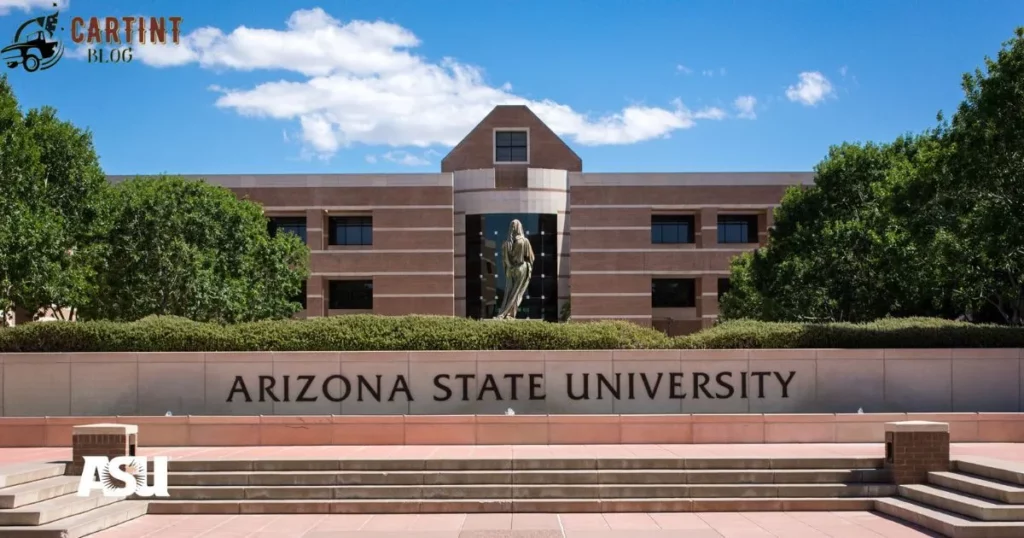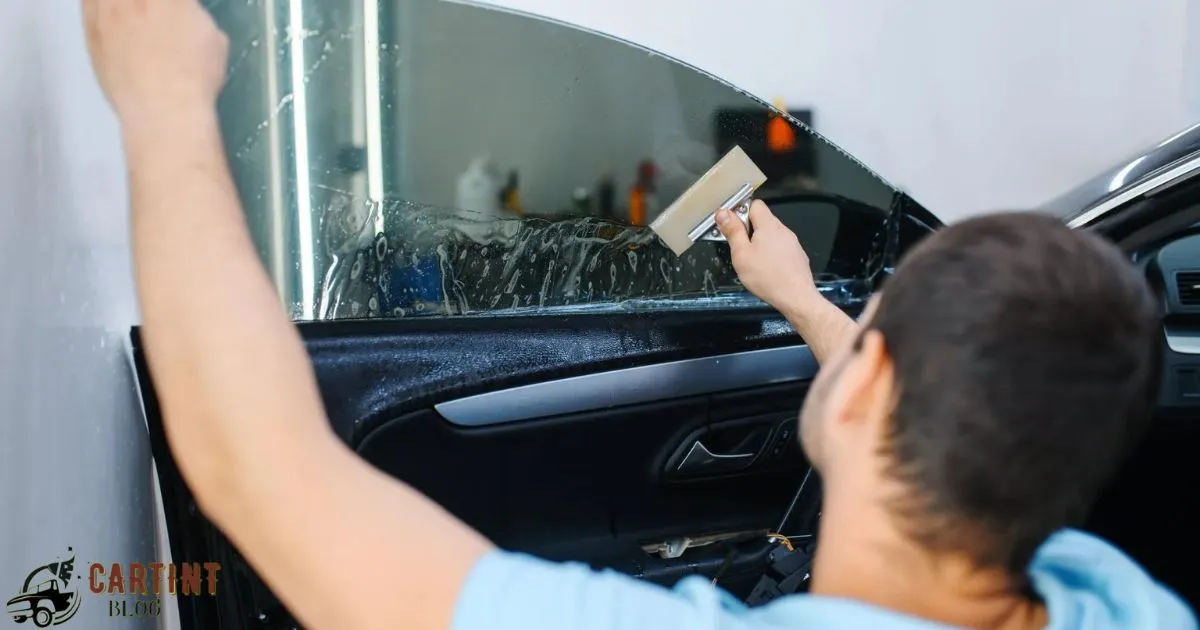Are you wondering about the legality of a 5 percent tint in Arizona? In the Grand Canyon State, “5 percent tint” refers to window tinting with a level of darkness that allows only 5 percent of light to pass through. But is this level of tint legal or illegal in Arizona?
Is 5 Percent Tint Legal in Arizona? The answer to this question may be more complex than you think. Arizona has specific laws regulating window tinting to ensure safety on the roads. Understanding the legality of 5 percent tint in Arizona requires a closer look at these regulations and their implications for drivers.
In Arizona, the legality of 5 percent tint hinges on compliance with state regulations. The state sets limits on the darkness of window tint for various vehicles. While some levels of tint are permitted, exceeding these limits may result in legal consequences. Arizona residents must be aware of these regulations to stay on the right side of the law regarding window tinting.
Tinting Windows in Arizona
The movable windows on the front sides, designated for the driver and passenger, must have a tint percentage of no less than 33%. There are no restrictions on the allowed tint percentage for the rear side windows, encompassing those situated behind the front side windows, as well as the back window.
Ensure compliance with Arizona’s tint laws when tinting windows. Front side windows mustn’t exceed 33%, while rear and back windows have no limits. Stay legal with You Tip Window Tinters.
To comply with Arizona’s tint laws, consider these tips. For front side windows, choose a tint with 33% VLT (Visible Light Transmission) or higher. Ensure the rear side and back windows comply with the law. Following these guidelines not only helps you stay within legal bounds but also contributes to road safety in Arizona.
Legal Tint Percentage in Arizona
In Arizona, the legal tint percentage for vehicle windows is regulated by state law. The permissible tint levels vary for different windows, with the front side windows allowing up to 33% visible light transmission, while the rear and back windows can have any level of tint darkness.
It is crucial for vehicle owners to adhere to these specifications to avoid legal consequences and ensure road safety.Arizona’s tint laws are designed to strike a balance between allowing personalization and maintaining visibility on the road.
To comply with these regulations, it is recommended that individuals consult the Arizona Revised Statutes or seek guidance from local law enforcement agencies. Being informed about the legal tint percentages helps vehicle owners make choices that align with the state’s regulations and contribute to a safer driving environment.
Can you have a 5% tint in Arizona?
In Arizona, the legal limit for window tint is 33% for the front side windows and 5% for the rear side and rear windows. This means that you can have a 5% tint on your rear windows without violating the tint laws.
It’s crucial to adhere to these regulations, as exceeding the specified limits can result in fines and penalties. To ensure compliance with Arizona’s tint laws, it is advisable to consult with a professional tinting service.
They can guide you on the appropriate tint levels for your vehicle, ensuring both style and adherence to legal standards. Always prioritize safety and legality when considering window tinting in Arizona.
Is 5% tint legal in the US?
In the United States, a 5% window tint is generally not legal. Tint laws vary by state, and in Arizona, the legal limit for tint darkness is typically 33% for front side windows and 5% for rear windows.
It’s crucial to adhere to these regulations to avoid fines or legal issues.To comply with tint laws in Arizona, consider opting for a window tint that meets the specified darkness limits.
Make sure the front side windows allow at least 33% of light to pass through, and for rear windows, a 5% tint is acceptable. Staying within these guidelines ensures not only legal compliance but also promotes road safety and visibility.
Is 5% tint legal in OK?
In Arizona, the legal limit for window tint is specified by the Visible Light Transmission (VLT) percentage. The law mandates that front side windows must allow at least 33% of light to pass through, while back side and rear windows must have a minimum VLT of 5%.
Therefore, a 5% tint is not legal for front side windows but is permissible for back side and rear windows in Arizona.It’s crucial to adhere to these regulations to avoid potential legal consequences.
Law enforcement officers may conduct inspections to ensure compliance, and failure to meet the specified VLT percentages can result in fines or other penalties. Always check and adhere to local tint laws to ensure that your vehicle remains in compliance with Arizona regulations.
Enforcement and Penalties

In Arizona, tint laws are strictly enforced to maintain road safety. The regulations specify that the front side windows must allow more than 33% of light in, while the back side and rear windows can have any level of tint. Law enforcement officers actively monitor vehicles to ensure compliance with these standards.
Failure to adhere to tinting regulations in Arizona results in penalties. Offenders may face fines and potential vehicle impoundment until the tint is brought into compliance with state laws. It’s crucial for drivers to be aware of and adhere to these regulations to avoid legal consequences and contribute to a safer driving environment.
Here’s a detailed table summarizing the tint laws in Arizona.
| Tint Component | Tint Level Restrictions in Arizona | Enforcement and Penalties |
| Front Side Windows | Must allow more than 33% of light in | Actively enforced by law enforcement officers to ensure compliance. |
| Back Side and Rear Windows | Any level of tint is allowed | Vehicles are regularly monitored to ensure adherence to tint regulations. |
| Penalties | Fines and potential vehicle impoundment until tint complies with laws | Non-compliance with tint regulations can result in financial penalties and may require corrective action on the tint. |
It is important for drivers in Arizona to be well-informed about these regulations to avoid legal consequences and contribute to a safer driving environment.
How much is a tint ticket in Arizona?
In Arizona, the fine for a tint violation typically ranges from $100 to $300. The exact amount depends on factors such as the severity of the violation and whether it is a first-time offense. It’s crucial to adhere to Arizona’s tint laws to avoid penalties.
Arizona law regulates vehicle window tinting to ensure road safety. The state mandates that front side windows must allow at least 33% of light to pass through, while rear and back windows can have any darkness.
Violating these regulations may result in fines ranging from $100 to $300, emphasizing the importance of compliance with Arizona’s tint laws to maintain both legal and safe driving conditions.
Do cops in Arizona actually enforce car window tinting laws?
In Arizona, law enforcement actively enforces car window tinting regulations. The state has specific guidelines regarding tint darkness, and officers routinely check for compliance during traffic stops. Violating these laws can result in fines, making it crucial for drivers to adhere to the specified tint levels outlined in Arizona’s regulations.
Arizona’s tint laws dictate that front side windows must allow more than 33% of light, while rear and back windows can have any darkness. The enforcement of these regulations underscores the importance of motorists ensuring their window tints meet the legal requirements to avoid penalties and maintain road safety.
Arizona Window Tinting Laws
Arizona window tinting laws are clear and specific. The regulations state that the front side windows must allow at least 33% of light to pass through, while the back side and rear windows can have any darkness. This means that when applying window tint on the front side windows, it’s crucial to adhere to the 33% light transmission requirement.
Arizona law permits the use of non-reflective tint on the top 5 inches of the windshield. The window tinting regulations exclude the windshield wiper area. To ensure compliance, it is essential for individuals to be aware of and follow these specific guidelines when tinting vehicle windows in Arizona.
Here’s a detailed table summarizing the Arizona window tinting laws.
| Window Type | Light Transmission Requirement | Additional Information |
| Front Side Windows | At least 33% | Non-reflective tint must comply with the 33% light transmission rule. |
| Back Side and Rear Windows | Any darkness | No specific restrictions on the darkness of tint for these windows. |
| Windshield | Top 5 inches | Non-reflective tint is allowed, excluding the windshield wiper area. |
This table provides a clear overview of the requirements for different types of windows in Arizona, making it easy for individuals to understand and comply with the state’s window tinting laws.
Tint Darkness Specifications
- Arizona tint darkness specifications vary based on the vehicle type.
- For sedans and SUVs, the front side windows must allow more than 33% light transmission.
- The back side and rear windows can have any darkness, but the windshield must allow over 33% light transmission.
- In Arizona, there are specific tint laws for commercial vehicles.
- Front side windows must allow more than 33% light transmission, while back side and rear windows can have any darkness.
- Always ensure compliance with these regulations to avoid legal issues.
Window tint darkness in Arizona
In Arizona, window tint darkness is regulated by state laws to ensure safety and visibility on the roads. The laws dictate that the front side windows must allow at least 33% of light to pass through, while the back side windows and rear window can have any darkness. This helps maintain clear visibility for drivers and law enforcement.
It’s important to comply with these regulations, as failure to do so may result in fines and citations. Keep in mind that these laws aim to strike a balance between personal preference and road safety, contributing to a safer driving environment for everyone in Arizona.
Tint darkness for sedans
Tint darkness for sedans in Arizona must adhere to specific regulations outlined by state law. The permissible tint limit for sedans is 33% light transmittance for the front side windows and 5% for the rear and back side windows.
It’s crucial for sedan owners to ensure their window tint complies with these regulations to avoid legal consequences.To stay within the legal boundaries, sedan owners in Arizona should prioritize tint darkness levels that align with state laws.
It’s essential to be aware that violating tint regulations may result in fines and penalties. Staying informed about Arizona’s tint laws for sedans is key to maintaining both road legality and a professional appearance.
Tint darkness for SUV and vans

In Arizona, tint darkness regulations for SUVs and vans are governed by specific laws. The permissible tint levels vary based on the type of vehicle. For front side windows, Arizona law allows tint that permits at least 33% of light, while there are no restrictions for tint darkness on the rear windows and back windshield.
It’s crucial for vehicle owners to adhere to these regulations to avoid legal complications. Law enforcement in Arizona actively enforces tint laws, and failure to comply may result in fines or other penalties.
Therefore, it is recommended that SUV and van owners in Arizona ensure their window tinting adheres to the state’s guidelines to stay within the legal limits.
Tint Reflection Requirements
In Arizona, tinted windows are regulated by specific laws to ensure safety and visibility on the road. The legal tint limit for the front side windows is 33%, meaning that only 33% of light can pass through.
Rear windows and the back windshield, however, can have a tint with any darkness.It’s important to note that reflective or mirrored tint is strictly prohibited in Arizona. The goal of these tint reflection requirements is to maintain clear visibility for drivers and law enforcement.
To comply with the tint laws in Arizona, it is advisable to familiarize oneself with these regulations and ensure that the vehicle’s window tint meets the specified criteria to avoid potential legal issues.
Window tint reflection in Arizona
In Arizona, window tint reflection is a critical aspect, and understanding tint laws is essential for compliance. The regulations stipulate that front side windows must allow at least 33% of light, while the windshield can have non-reflective tint above the manufacturer’s AS-1 line.
It’s crucial to note that Arizona law prohibits reflective or mirrored window tinting on all windows. This means that using such tint on any window, including the windshield and front side windows, is not allowed.
Staying informed about these regulations ensures you adhere to the law and avoid potential fines or legal issues related to window tinting in Arizona.
Tint reflection for sedans
Tint reflection for sedans in Arizona must adhere to specific laws. The regulations stipulate that sedan windows can have a maximum light reflection of 35%. This means that when considering window tinting for sedans, it is crucial to ensure compliance with this legal requirement.
To maintain professionalism, it is recommended to consult the Arizona Department of Transportation or local law enforcement for the most up-to-date and accurate information on tint laws.
Professional tinting services in Arizona are well-versed in these regulations and can provide guidance to ensure your sedan’s tint reflects both style and adherence to the law.
Tint reflection for SUV and vans
When tinting windows for SUVs and vans in Arizona, it’s crucial to adhere to the state’s tint laws. Arizona law permits non-reflective tint on the top five inches of the windshield and allows front side windows to have up to 33% light transmittance. The rear side windows and rear windshield, however, can have any level of darkness.
It’s important to note that the reflectivity of the tint is regulated as well. For SUVs and vans, reflective tint is only allowed on the front side windows if it falls within the 33% light transmittance limit. Ensuring compliance with Arizona’s tint laws not only avoids legal issues but also promotes safer driving conditions by maintaining proper visibility.
Other Arizona window tint rules and regulations
In Arizona, tint laws are regulated by specific guidelines to maintain road safety. These regulations dictate the acceptable levels of darkness for window tinting on vehicles. The law requires that front side windows must allow at least 33% of light to pass through, while the windshield can have non-reflective tint on the top five inches.
1. Tint Laws Overview
Arizona strictly regulates window tinting to ensure road safety and visibility.
The state law mandates that front side windows must allow more than 33% of light in, while there are no restrictions for rear windows.
2. Specific Tint Percentages
Tint on the windshield’s top 5 inches is permitted, and the darkness should not exceed 33%.
For side and rear windows, darkness limitations range from 33% to no restrictions, depending on the vehicle type.
3. Medical Exemptions
Arizona allows medical exemptions for individuals requiring darker tints due to health reasons.
To qualify, applicants must submit a Medical Exception Certificate, specifying the recommended tint darkness.
4. Enforcement and Penalties
Law enforcement actively enforces tint regulations during routine traffic stops.
Violations may result in fines ranging from $100 to $250, and corrective action is required to bring tint levels into compliance.
5. Modification Regulations
Modifying factory-installed tint is permissible, but the final tint darkness must comply with state regulations.
It is essential for vehicle owners to stay informed about tint laws to avoid legal repercussions and maintain road safety standards.
State of Arizona Info

Arizona is a southwestern U.S. state known for its diverse landscapes and vibrant culture. With a population of approximately 7.3 million people, it ranks as the 14th most populous state in the nation. Geographically, Arizona spans 113,998 square miles, making it the sixth largest state in the U.S.
When it comes to tint laws in Arizona, it’s crucial to adhere to regulations. The state permits a maximum of 33% light transmission for front side windows, while there are no restrictions for rear windows.
This ensures road safety and compliance with Arizona’s tinting regulations. Understanding and following these guidelines is essential for residents and visitors alike to avoid legal complications.
Here’s a detailed table summarizing key information about the state of Arizona.
| Attribute | Value |
| Geographic Area | 113,998 square miles |
| Population | Approximately 7.3 million |
| Rank by Population | 14th most populous in the U.S. |
| Largest City | Phoenix |
| Capital | Phoenix |
| Official Language | English |
| Time Zone | Mountain Time Zone |
| Tint Laws (Front Windows) | Maximum 33% light transmission |
| Tint Laws (Rear Windows) | No specific restrictions |
This table provides a concise overview of Arizona’s geographical size, population, and key regulations related to tinted windows, ensuring a clear and professional presentation of the information.
Legal References
In Arizona, tint laws regulate the darkness of window tinting on vehicles. According to Arizona Revised Statutes (ARS) Title 28, Section 959, the front side windows must allow over 33% of light to pass through.
The windshield is prohibited from having any non-reflective tint above the manufacturer’s AS-1 line.Moving to the back side and rear windows, the law allows a minimum of 5% light transmission. This means that the tint on these windows must permit at least 5% of external light to pass through.
It’s crucial to adhere to these specifications to avoid legal consequences and ensure compliance with Arizona’s tinting regulations. For further details, please refer to ARS Title 28, Section 959 in the Arizona law book.
Tint law references
In Arizona, tinted windows must allow at least 33% of light to pass through. According to Arizona Revised Statutes (ARS) § 28-959.01, this regulation applies to both the front and rear windows. The law aims to ensure proper visibility for drivers and law enforcement.
There are specific regulations for the tint darkness on the front side windows. As per ARS § 28-959.01(A)(1), the darkness of tint on these windows should not exceed 33%.
These laws contribute to road safety by maintaining clear visibility and aiding law enforcement in enforcing traffic regulations. Always adhere to these tint laws to avoid penalties and ensure a safer driving experience in Arizona.
Medical exemption info
In Arizona, medical exemptions for tinted windows are granted to individuals with specific medical conditions. The law allows for window tint that exceeds the standard limits if a person provides a written certification from a licensed healthcare professional. This exemption applies to conditions such as lupus, porphyria, and other medical conditions that require protection from the sun’s harmful rays.
Arizona tint laws specify that the front side windows must allow at least 33% of light to pass through, while the back side and rear windows can have any level of tint darkness. It’s crucial to adhere to these regulations to avoid fines or legal consequences. Always consult the latest version of the Arizona Revised Statutes for the most up-to-date information on tint laws.
Reference Arizona Revised Statutes, Title 28, Section 2673.
FAQs
Is 5 Percent Tint Legal in Arizona?
Yes, Arizona law prohibits window tint with less than 33% light transmittance on the front side windows and less than 5% on the rear side and back windows.
What are the Consequences of Using 5 Percent Tint in Arizona?
Using 5 percent tint in Arizona may result in fines and penalties, and law enforcement can issue citations for violating window tint regulations.
Can I Get a Medical Exemption for 5 Percent Tint in Arizona?
Arizona allows medical exemptions for window tint, but the process requires approval through the Motor Vehicle Division, and it’s not guaranteed for 5 percent tint.
Are Rental Cars with 5 Percent Tint Allowed in Arizona?
Rental cars must comply with Arizona’s window tint laws, so using a rental with 5 percent tint could lead to legal consequences for both the driver and the rental company.
Does Arizona Enforce Window Tint Laws Strictly?
Law enforcement in Arizona actively enforces window tint laws, and drivers with 5 percent tint may be subject to inspections and citations during routine traffic stops.
Conclusion
Arizona law strictly prohibits window tint that blocks more than 35 percent of light transmission, making 5 percent tint illegal in the state. The regulations aim to ensure visibility for drivers and promote road safety.
Choosing to install 5 percent tint in Arizona can result in fines and penalties, as it violates the established guidelines. Adhering to these tinting regulations not only avoids legal consequences but also contributes to creating a safer driving environment for everyone on the road.
It’s essential for Arizona residents to be aware of and comply with these tinting laws to stay within the legal boundaries and prioritize safety while driving.



